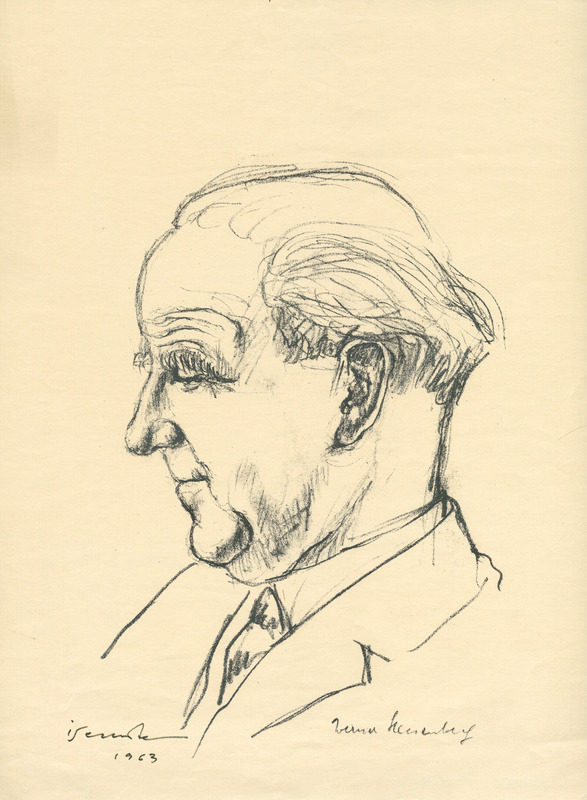Biographical/Historical Information
Werner Heisenberg (5 December 1901 – 1 February 1976) was a German theoretical physicist who made foundational contributions to quantum mechanics and is best known for asserting the uncertainty principle of quantum theory. In addition, he made important contributions to nuclear physics, quantum field theory, and particle physics. Heisenberg, along with Max Born and Pascual Jordan, set forth the matrix formulation of quantum mechanics in 1925. Heisenberg was awarded the 1932 Nobel Prize in Physics for the creation of quantum mechanics. Following World War II, he was director of the Kaiser Wilhelm Institute for Physics until 1958. Heisenberg was also president of the German Research Council, chairman of the Commission for Atomic Physics, chairman of the Nuclear Physics Working Group, and president of the Alexander von Humboldt Foundation.
Harald Isenstein was a German-Jewish artist, best known for his sculptural busts of prominent personalities. Born in Hannover on August 13, 1898, he studied at the Academy of Arts in Berlin, before co-founding and teaching at the private Jewish Reimann School of Art. He also co-founded the Volks-Kunstschule in 1925. As a professional sculptor, he produced the bust of Albert Einstein in front of the Einstein Tower in Potsdam. In 1934 he emigrated to Denmark, then moved to Sweden in 1943, before settling in Copenhagen in 1946. Isenstein died in Copenhagen on February 3, 1980. Most of his works can be found at the Museum of Korsør in Denmark.
Reproductions and Permissions
We welcome fair use of this content. Please credit the Leo Baeck Institute in your citation. For usage policies and to request higher resolution images, see Reproductions and Permissions.
Citation
Isenstein, Harald K.: Werner Heisenberg, Leo Baeck Institute, 2008.019.
